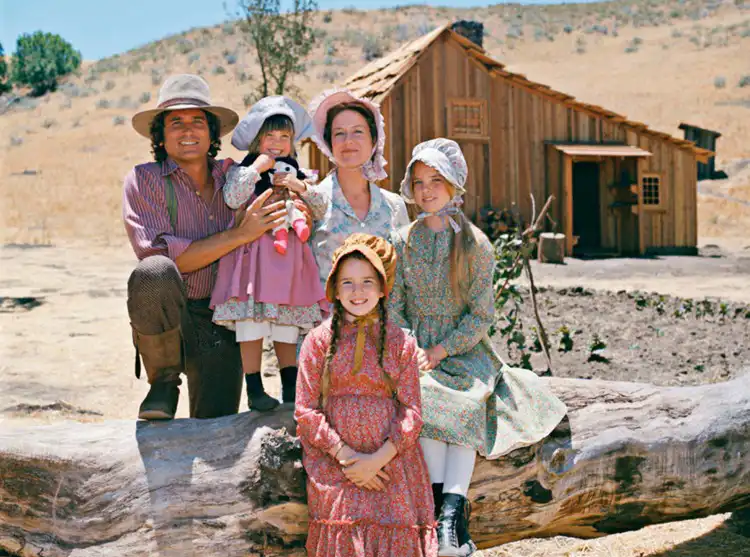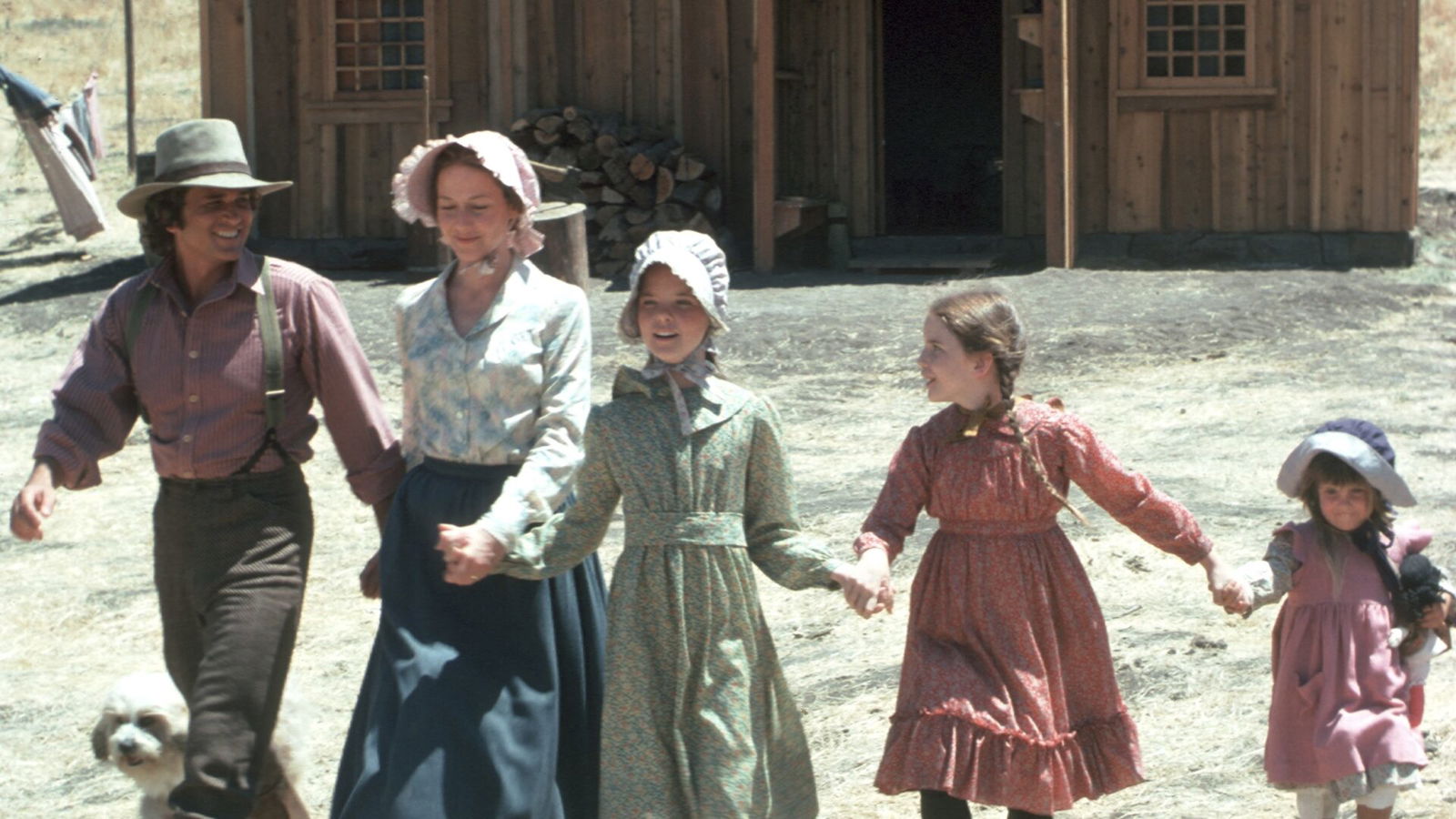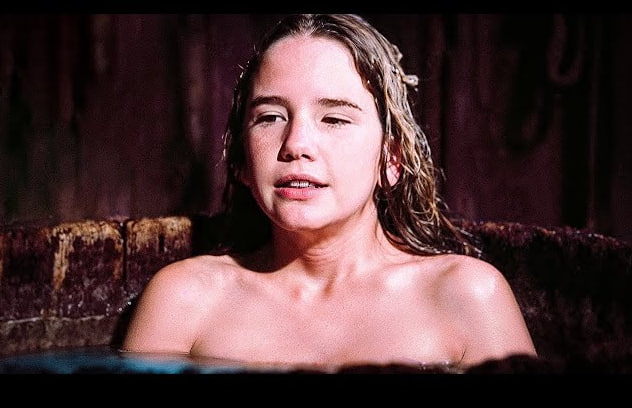Little House on the Prairie, the beloved American television series based on the books by Laura Ingalls Wilder, originally aired from 1974 to 1983. The series brought pioneer life to millions of viewers, offering heartfelt stories of hardship, community, and family values. While the show was praised for its storytelling and strong performances, it wasn’t without its flaws.
Despite being set in the late 19th century, attentive fans and historians have pointed out numerous historical inaccuracies, continuity errors, and behind-the-scenes quirks that occasionally broke the illusion of authenticity. Here are some of the most surprising mistakes and inconsistencies that have been identified over the years.

Historical Inaccuracies in Timeline and Setting
The real Laura Ingalls Wilder was born in 1867, and her family’s adventures took place primarily in the 1870s and 1880s. However, the television adaptation sometimes introduced elements that didn’t match the era.
One notable example is the appearance of objects or technologies that did not yet exist during that time period. In a few episodes, characters were shown using products, phrases, or references that would not have been known in 19th-century frontier towns. For example, modern fabrics, hairstyles, and even canned goods appeared more than once, although mass production of certain consumer goods only became common in the early 20th century.
While such details may be considered minor, they can be jarring for viewers knowledgeable about the time period and its cultural context.

The Curious Case of Laura’s Pregnancy Timeline
Laura Ingalls, played by Melissa Gilbert, announces her pregnancy during season 7 of the show. However, fans quickly noticed that her pregnancy seems to last unusually long—well beyond the typical nine-month term.
This continuity error may have resulted from episode sequencing or production delays, which can affect how storylines unfold on screen. In serialized TV storytelling, especially in the pre-digital era, episode airing dates and filming schedules often didn’t align perfectly with real-time narrative arcs, leading to perceived inconsistencies.
Alison Arngrim’s Wig: The Iconic Curls That Weren’t Real
Alison Arngrim portrayed Nellie Oleson, one of the most memorable antagonists in the series. Nellie’s signature blonde ringlets became a defining characteristic of her appearance. However, those curls were not natural.
According to Arngrim’s own accounts in her memoir Confessions of a Prairie Bitch (cited by media outlets including NPR and CBS), her hair was originally styled using painful curling methods. The process was time-consuming and damaging, so the production team eventually opted for a custom-made wig. The wig became an essential part of her costume, affixed with pins and combs to keep it secure during filming.
This behind-the-scenes decision helped preserve continuity while protecting the actor’s comfort—something increasingly prioritized in modern productions.

The “Colonel Sanders” Lookalike
In one episode from season 8, viewers noticed a character who bore a striking resemblance to Harland Sanders, the founder of Kentucky Fried Chicken. The character reportedly offers a chicken franchise, which seemed out of place for a series set decades before fast-food franchises even existed.
This was not a deliberate crossover or cameo but rather an unfortunate anachronism. Colonel Sanders was born in 1890, after the timeframe in which Little House on the Prairie is set. KFC was not founded until the 1930s. The inclusion of such a character likely reflects creative liberties or comedic license, rather than an attempt at historical realism.
Nevertheless, the scene remains one of the more eyebrow-raising moments among fans familiar with American cultural history.
Cold Weather with No Coats?
In another episode set in the wintery conditions of Minneapolis, several characters are shown walking outdoors in thin clothing, with no coats or winter gear despite the frigid setting. Viewers pointed out that this seemed implausible given Minnesota’s notoriously harsh winters.
The likely explanation lies in the production location. Much of Little House on the Prairie was filmed in California and Arizona, including the Simi Valley and Tucson. While these areas provided scenic backdrops and consistent weather, they posed challenges for filming winter episodes. To depict snow, the production team sometimes used artificial materials like white blankets or shaved ice, and scenes set in winter were often filmed in warm temperatures.
As a result, actors occasionally dressed for the plot rather than the climate being portrayed—something not uncommon in film and television but noticeable nonetheless.
Footwear Errors and Modern Props
Attentive viewers have also caught glimpses of modern shoes, such as rubber soles or sneakers, worn by background characters or children running in the distance. Similarly, objects like metal zippers or plastic containers occasionally made unintended appearances.
Zippers were not widely used in clothing until the 20th century, and plastic wasn’t commercially manufactured until the early 1900s. These slips were likely accidental, the result of background extras or props that were overlooked during filming.
Such errors are understandable given the limitations of 1970s television production. However, in the age of high-definition rewatching, these moments stand out more than they did when originally aired.

Set Construction and Visible Power Lines
While the sets for Walnut Grove and the Ingalls family farm were carefully designed to evoke the look and feel of 19th-century America, occasional mistakes in set design have been noted. For instance, some wide-angle shots accidentally revealed telephone poles or electrical wires in the background.
These details, while minor, momentarily break the immersive experience of a rural prairie town in the 1800s. Still, considering the show was filmed on location rather than on controlled studio lots, such technical oversights are understandable.
Reused Guest Actors in Different Roles
Another quirk of Little House on the Prairie is the frequent reuse of the same actors in different roles throughout the series. For example, actor Richard Bull played the character of Nels Oleson consistently, but other actors such as Jonathan Gilbert (Melissa Gilbert’s real-life brother) appeared in multiple roles.
While this was a practical decision to manage casting budgets and production schedules, it occasionally led to confusion among viewers who recognized the same faces reappearing as different townspeople.
Conclusion
Little House on the Prairie remains an iconic piece of American television history. Despite its errors and anachronisms, it succeeded in bringing historical fiction to life for generations of viewers. The occasional mistake in wardrobe, props, or continuity does little to diminish the show’s cultural impact.
In fact, these imperfections often endear the series further to its fanbase. They remind us that even the most carefully crafted productions are the result of human effort, creative constraints, and real-world limitations. As long as Little House on the Prairie continues to be watched and appreciated, its legacy will remain intact—warts and all.
Sources:
-
PBS – American Experience: Laura Ingalls Wilder
-
Smithsonian Magazine – “The Truth Behind the Little House Books”
-
NPR – Interview with Alison Arngrim
-
Los Angeles Times – “Inside the Making of Little House on the Prairie“
-
IMDb Production Notes and Trivia
-
CBS News Archives
